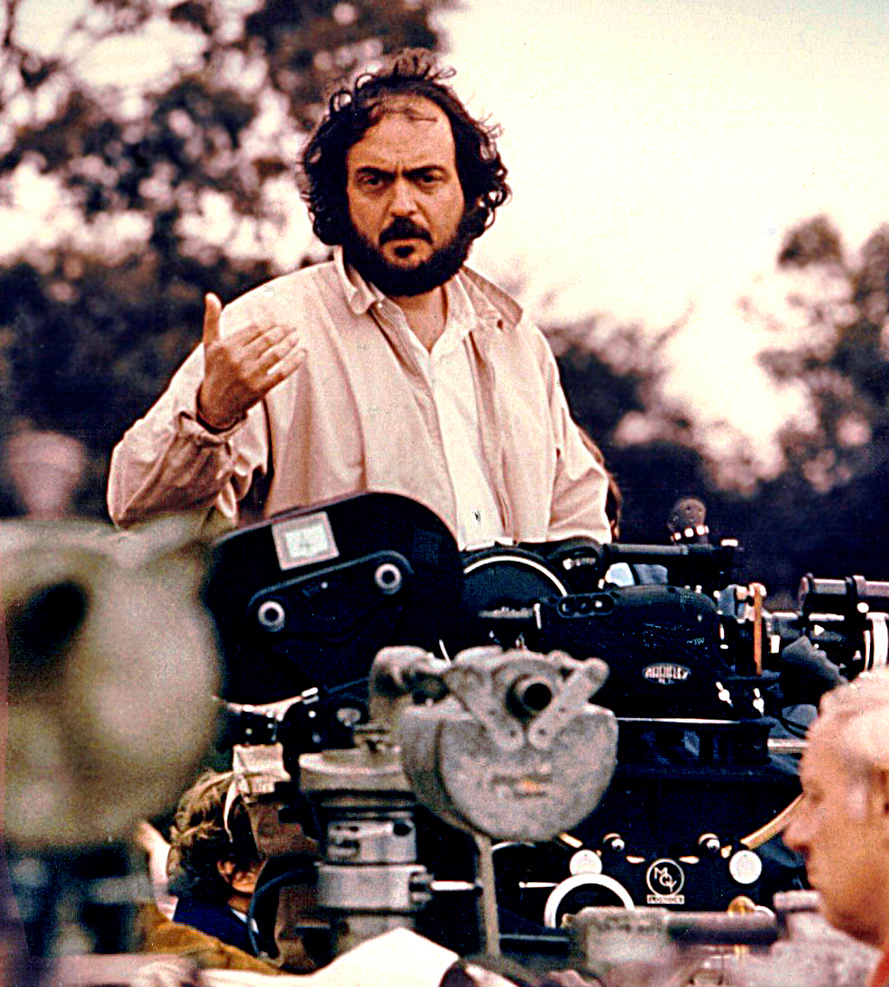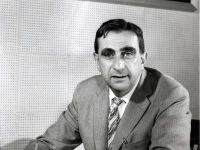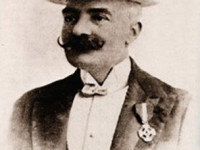
Stanley Kubrick (1928-1999)
On July 26, 1928, American film director, screenwriter, producer, cinematographer, and editor Stanley Kubrick was born. He is regarded as one of the greatest filmmakers of all time. His films, typically adaptations of novels or short stories, are noted for their unique cinematography, attention to details to achieve realism and an inspired use of music scores. Clockwork Orange, 2001, Full Metal Jacket, Lolita, The Shining, ‘I’m Spartacus’ or Dr. Strangelove – they all are considered as being some of the best movies ever made.
“When I made my first film, I think the thing was probably helped me the most was that it was such an unusual thing to do in the early 50s for someone who actually go and make a film. People thought it was impossible. It really is terribly easy. All anybody needs is a camera, a tape recorder, and some imagination.” (Stanley Kubrick in an Interview, 1968)
Playing Chess for Money
Stanley Kubrick was born in the Bronx district of New York, as the first of two children into a family with Jewish ancestry. As a child, Stanley was considered intelligent, but he did not achieve particularly high grades at school. Concerned to find a remedy for his son’s poor academic performance, Jacques (Jacob) Leonard Kubrick sent him to stay with his uncle in Pasadena, California in 1940, hoping that a change of scenery would also improve Stanley’s grades. Returning back home in 1941 for his last year of grammar school, there seemed to be little change in his attitude or his results. But then, Stanley was introduced by his father to the game of chess, with the desired result. Kubrick took to the game passionately, and quickly became a skilled player. Actually, he later also played chess for money in Greenwich Village to supplement his income, before making his first movie.
“You don’t have to be a nice person to be extremely talented. You can be a shit and be talented and, conversely, you can be the nicest guy in the world and not have any talent. Stanley Kubrick is a talented shit.” (Kirk Douglas after working on Spartacus with Stanley Kubrick.)
A Camera Should Change his Life
But it was an even wiser decision by his father to give his son a camera for his thirteenth birthday. Kubrick became an avid photographer, and would often make trips around New York taking photographs which he would develop in a friend’s darkroom. After selling his first free-lance pictures to Look magazine while still in high school, he began working as a Look staff photographer, traveling the world in their employ for several years. He subsequently enrolled as a non-matriculating student at Columbia University and in the late 1940s Kubrick became enamored of filmmaking. In 1951, Kubrick used his life savings to finance his first film, Day of the Fight, a 16-minute documentary profiling boxer Walter Cartier. Encouraged by the film being a success, Kubrick quit his job at Look magazine to spent his full attention to filmmaking.
“Anyone who has ever been privileged to direct a film also knows that, although it can be like trying to write War and Peace in a bumper car in an amusement park, when you finally get it right, there are not many joys in life that can equal the feeling.” (Stanley Kubrick in 1999)
From Paths of Glory to Spartacus
Fist significant commercial success came with Paths of Glory in 1957. The film, set during World War I, is based on Humphrey Cobb‘s 1935 antiwar novel, and stars Kirk Douglas. It follows a French army unit ordered on an impossible mission by their superiors. The film was critically acclaimed and admired within the industry, establishing Kubrick as a major up-and-coming young filmmaker. However, the film was banned in both France and Germany for many years for its fictionalized depictions of the French military. Spartacus, released in 1960, was based on the true life story of the historical figure, produced by Kirk Douglas who also starred as rebellious slave Spartacus, and Laurence Olivier as his foe, the Roman general and politician Marcus Licinius Crassus. Douglas hired Kubrick to take over direction soon after he fired director Anthony Mann. This became Kubrick’s largest film by far, with a cast of over 10,000, and at the time was the most expensive film ever made in America. Spartacus was a critical and commercial success and established Kubrick as a major director, receiving six Academy Award nominations and winning four.
“There’s something in the human personality which resents things that are clear, and conversely, something which is attracted to puzzles, enigmas, and allegories.” (Stanley Kubrick)
Setting Directions
After Lolita (1962) and Dr. Strangelove (1964) [6] – the latter one of my personal favourites – Kubrick spent five years developing his next film, 2001: A Space Odyssey (1968). The film was adapted from the short story The Sentinel, by science fiction writer Arthur C. Clarke, telling the story of the birthing of one intelligence by another, is developed in two parallel intersecting stories on two very different times scales. Upon its release in 1968, the film was said to defy genre convention and was claimed to be unlike any science-fiction movie before it. Today, many film critics and moviemakers regard it “as the most significant Hollywood breakthrough since Orson Welles‘ Citizen Kane.[8]
“The screen is a magic medium. It has such power that it can retain interest as it conveys emotions and moods that no other art form can hope to tackle.” (Stanley Kubrick)
A Clockwork Orange and Barry Lyndon
In A Clockwork Orange (1971), his adaptation of Anthony Burgess’ novel of the same name is an exploration of violence and experimental rehabilitation by law enforcement authorities. Because of its depiction of teenage violence, however, the film became one of the most controversial films of the decade, and part of an ongoing debate about violence in cinema. In Barry Lyndon (1975), an adaptation of William Makepeace Thackeray‘s novel about the adventures of an 18th-century Irish gambler and social climber,[7] Kubrick again revolutionized cinematography and lighting techniques. Most notably, interior scenes were shot with a specially adapted high-speed f/0.7 Zeiss camera lens originally developed for NASA that allowed many scenes to be lit only with candlelight, creating diffused-light images reminiscent of 18th-century paintings.
“I have always enjoyed dealing with a slightly surrealistic situation and presenting it in a realistic manner.” (Stanley Kubrick)
Later Years in Film
But, also his later films are rather remarkable, as e.g. The Shining (1980), an adaption from the bestselling horror writer Stephen King, Full Metal Jacket (1987), an adaptation of a Vietnam War novel, and Eyes Wide Shut (1999), based on Arthur Schnitzler’s Freudian novella Traumnovelle. To give a full account of all of Kubrick’s achievements would go beyond the scope of this small blog post. In 1997, Kubrick was given two of the film world’s highest honors, winning the D.W. Griffith Award from the Director’s Guild of America as well as the Golden Lion Award at the 54th Venice International Film Festival. Stanley Kubrick sparked a different style of movie making by concentrating on the visual art at hand rather than worrying about dialogue. Because of this, some consider him the best film director ever. On March 7, 1999, Kubrick died in his sleep of natural causes at the age of 70.
Stanley Kubrick’s 2001: A Space Odyssey – In Discussion (2014 BBC), [10]
References and Further Reading:
- [1] The Life and Work of Stanley Kubrick
- [2] Stanley Kubrick at IMDB
- [3] Stanley Kubrick at filmmakers.com
- [4] Stanley Kubrick biography at Wikidata (Of course Kubrick has Wikidata entity id Q2001…)
- [5] Stanley Kubrick Exhibition Website
- [6] Edward Teller and Stanley Kubrick’s Dr. Strangelove, SciHi Blog
- [7] William Makepeace Thackeray’s deft Skewering of Human Foibles, SciHi Blog
- [8] Orson Welles and the 1938 Radio Show Panic, SciHi Blog
- [9] Orson Welles’ Disputed Masterpiece Citizen Kane , SciHi Blog
- [10] Stanley Kubrick’s 2001: A Space Odyssey – In Discussion (2014 BBC), A panel discussion on the history of Stanley Kubrick’s film, 2001 A Space Odyssey. Featuring Dr. Brian Cox, with actors Keir Dullea and Gary Lockwood, ados4k @ youtube
- [11] Curtis, Quentin (1996). “An enigma wrapped in a mystery wrapped in an anorak”. The Daily Telegraph. UK.
- [12] Walker, Alexander (1972). Stanley Kubrick directs. Harcourt Brace Jovanovich.
- [13] Kubrick, Christiane (2002). Stanley Kubrick: A Life in Pictures. Little, Brown.
- [14] Timeline for Stanley Kubrick, via Wikidata





